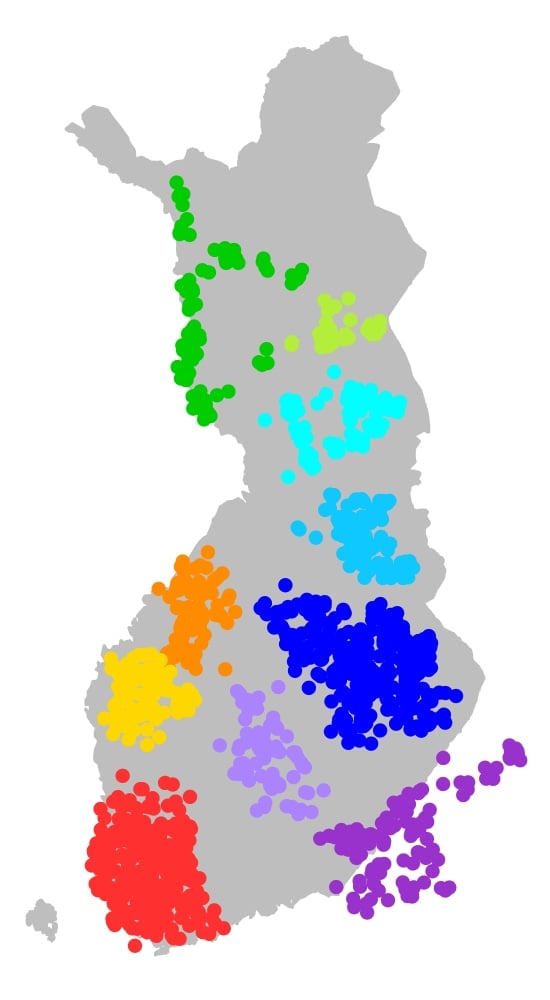(CN) — Using genetics data, scientists announced Thursday they have for the first time tracked how genetics in Finland have changed within seven decades, allowing them to follow changes brought about by World War II and lead to better methods of tracking individuals’ genetic history.
Researchers from the University of Finland examined the genetic samples of 18,463 Finnish people from 12 geographical regions of the country and marked the changes that occurred between 1923 and 1987. Their findings were published in a study in the journal PLOS Genetics.
Home DNA analysis tests such as 23andMe have soared in popularity over the past few years, but their data on genetic ancestry generally falls onto the scale of continents or countries.
Matti Perinen, lead author and associate professor at the university, said the research team wanted to go more in-depth with genetic data in order to better understand where people came from.
“So far, studies have typically considered genetic ancestry on a broad continental level, and there is much less understanding of how more detailed genetic ancestry profiles can be generated and how accurate and reliable they are,” he wrote.
To dig deeper into the genetic history mystery, Perinen and his team decided to focus solely on Finland using genetic data pulled from the country’s National FINRISK Study, a large population study conducted every five years since 1972 meant to assess nationwide health levels.
What researchers found was a massive shift when Finland ceded parts of its eastern lands to the Soviet Union during World War II as 11% of the country’s population, about 400,000, was forced to move.
“Additionally, urbanization, starting in the 1950s, left its mark, as people moved into cities in the southern and western parts of the country,” the authors said in a statement.
The scientists found genetic mixing to be varied in the different regions of the country, noting that changes in genetics did not happen uniformly.
“Additionally, different regions of Finland show very different levels of genetic mixing in 1900s, from little mixed regions like Ostrobothnia to highly mixed regions like Southwestern Finland,” the study states.
The researchers compiled their data into an interactive website where users themselves can track changes to the country’s genetic profile by regions.
“This is the first time that scientists have estimated annual changes in the fine-scale ancestry profiles of individuals from a relatively homogeneous European country, and their work demonstrates that this information can capture a detailed history of a population in space and time,” the researchers said in a statement.
Subscribe to Closing Arguments
Sign up for new weekly newsletter Closing Arguments to get the latest about ongoing trials, major litigation and hot cases and rulings in courthouses around the U.S. and the world.









